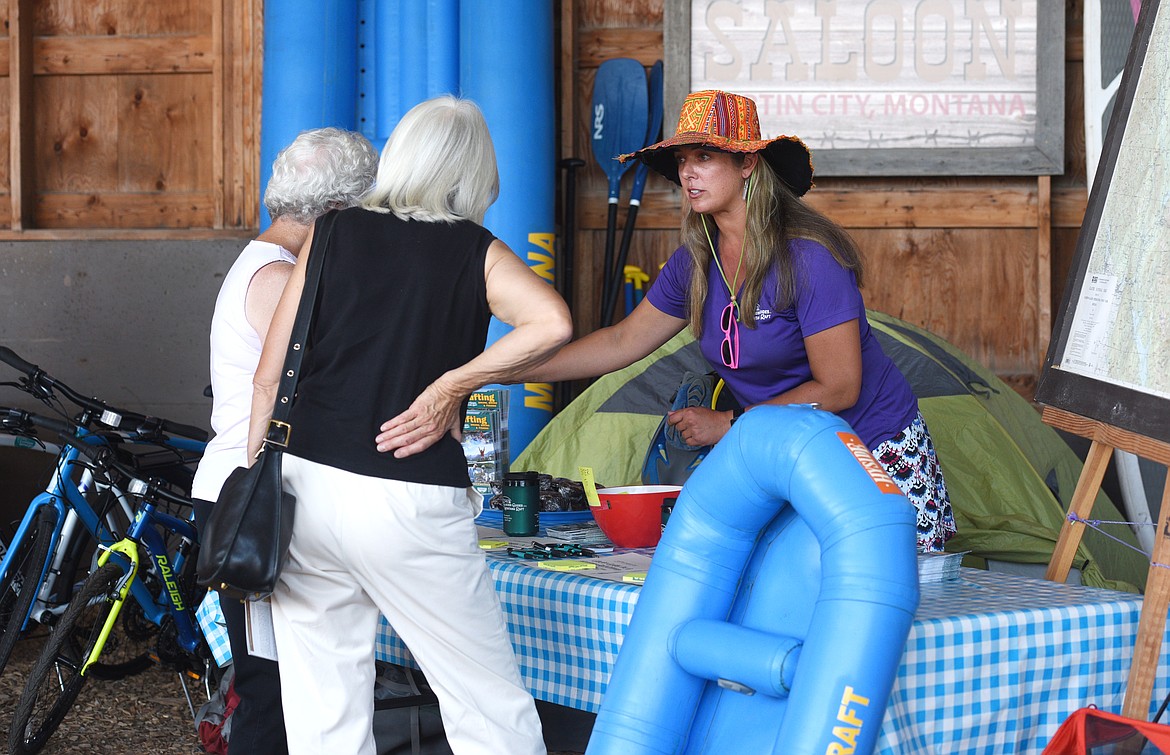Event highlights state's outdoor economy
The thriving state of Montana’s outdoor economy was the talk of the town at the Last Best Outdoors Fest held Tuesday at The Coop in Columbia Falls. The celebration, hosted by Business for Montana’s Outdoors (BFMO) and the Montana Brewer’s Association, focused on celebrating the state’s booming outdoors industry with food, craft beer and music, preceded by a panel discussion on the economic value of public lands.
A new report shows that outdoor recreation contributes $7.1 billion to the state’s economy and support 71,000 Montana jobs.
Research conducted by Headwaters Economics and funded by BFMO was presented during the discussion which showcased the economic impact of federal lands from 2010 to 2015. Flathead County, which is comprised of 73 percent public lands, has seen a 29 percent increase in population and 54 percent jump in personal income over the five-year period.
Headwaters economist Ray Rasker said the outdoors economy exists across a variety of sectors, including health care, real estate and entertainment — all of which have seen increases of more than 6,000 jobs from 2010 to 2015, while other fields like farming and manufacturing have fallen over the same period.
A substantial driving component behind the state’s growth is tourism, which recently made headlines when Glacier National Park visitation hit 1 million for July alone. In 2015, non-resident visitors spent $635 million in the county, which amounts to more economic activity than construction and manufacturing combined.
Columbia Falls Mayor Don Barnhart said Montana’s outdoor lifestyle is what draws people to the Glacier Park gateway community. He’s also noticed a resurgence on the residential front.
“We’re getting more retail places and our uptown is getting a renaissance. We’re the place people want to live and send their kids to school, so one follows the other,” Barnhart said. “We don’t hardly have anywhere for people to build, we’re almost out of room.”
Regional business owners also touted the value of the state’s natural assets as a way to draw and retain talent in their companies.
Ryan Busse, vice president of sales at rifle manufacturer Kimber, said he relocated to Columbia Falls for public lands and the recreational opportunities in the area — and he’s not alone.
“I’ve conducted hundreds of job interviews over the years at Kimber and I don’t remember a single one, not one, where quality of life or public lands didn’t come up as a drawing force,” Busse said.
U.S. Sen. Jon Tester, D-Mont., also spoke at the panel to both introduce new legislation and advocate for the preservation of the state’s public lands.
“Public lands didn’t happen by accident. They’re not going to stick around here without some proactive work,” Tester said. “There are plenty of folks around Washington D.C. and the country that would love to see this sold off.”
To help bring a voice for the outdoors to Washington, Tester announced a new piece of public lands legislation called the Outdoor Economy Act, which would establish an outdoor recreation advisory committee in the U.S. Department of the Interior to promote public land access.
“Oftentimes folks get inside those brick walls and they forget what’s outside of them,” Tester said.
Columbia Falls bowhunter Michael Shepard, of Montana Backcountry Hunters and Anglers, said he was concerned about what he considered to be a lack of access to public lands on the east side of the state and preserving current access points for hunting and fishing.
“I’m almost 70 years old and I’ve been bowhunting since 1961,” Shepard said. “Without being able to leave my house and walk half a mile and be on national forest land, I’d have to drive 10 miles to go somewhere and go hunting. It’s very important to be able to have that instant access that I don’t have to pay a fee, a trespass fee, to get there.”






